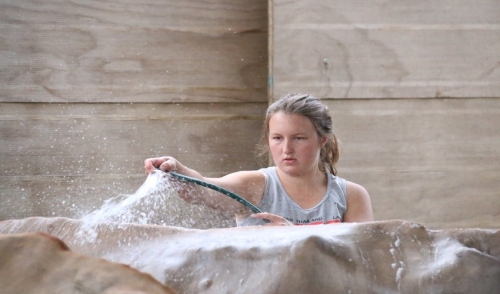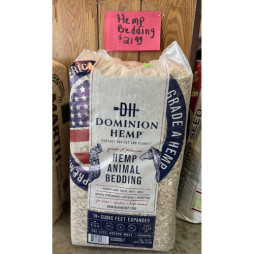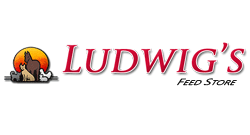{article.name}
Stay Informed
Sign up for email list
for exclusive offers, information and updates!
View our Email Archive
Steps for Washing Your Livestock and Horses

- Share this:
- Share on Facebook
- Pin on Pinterest
- Tweet on Twitter
Whether you want to wash your livestock to make them look their best for a show, be more comfortable, or to avoid contamination that could lead to health problems, the steps for washing your livestock and horses are the same, and easier than you may think.
- Check the Weather
Only wash your livestock on relatively warm days, or else they may become uncomfortably chilled when wet and could be susceptible to infections or illnesses. A day with a light breeze can help them dry more quickly, but note whether the wind is raising dust that could cancel out the cleansing.
- Use a Safe Bathing Area
Horses and other livestock need to be comfortable and feel safe to overcome their nervousness at bath time. Opt for a bathing area that is somewhat sheltered and free of potentially abrupt distractions, and be sure the ground is either concrete or grass to avoid a muddy mess.
- Socialize First
Before starting the bath, briefly walk or groom your animal to help calm it. A general brushing can not only help the animal realize that it is time to be groomed, but will also remove caked on dirt, tangles or other debris so the bathing is easier.
- Secure the Animal
Unless your animal is very calm and willing to stand still no matter what you do, it is best to secure it with a halter during its bath. The halter should be loose enough so you can clean beneath the straps, and a hay net can help keep the animal occupied while you wash it.
- Protect Hooves
An animal's hooves can absorb water and become brittle and cracked, increasing the risk of infection, injury, and discomfort. To minimize that risk, apply a hoof sealant before beginning the bath to protect the hooves from excess water.
- Introduce Water
Gently aim your hose at the animal's front feet to get it accustomed to the spray. Gradually direct the hose higher up on the body and toward the rear as the animal remains calm, until it is thoroughly wet. If you are using a sponge, start sponging the animal's coat in the same pattern, always watching for signs of distress or nervousness.
- Shampoo Gradually
After the animal is thoroughly wet, begin shampooing its coat one small section at a time. If the shampoo dries before being rinsed, it will make the coat dull and matted, so start at the top along the back and work your way down, gently shampooing and rinsing small sections.
- Wash the Tail
Use a bucket of diluted, soapy water to soak the tail for a minute or two before massaging the shampoo in to the roots, then rinse the tail thoroughly. Clean around the anus with a sponge, making sure to remove all debris without causing irritation.
- Wash the Head
Wash your animal's head last, using a soft cloth and taking great care not to let any water or soap dribble into the eyes. Dilute the soap excessively for washing the head to minimize the need for rinsing and take extra care around the eyes, nostrils, and mouth.
- Rinse Thoroughly
While you should have been rinsing your animal's coat all along, it doesn't hurt to do another thorough rinse after you have finished shampooing. Reverse the pattern you used when acclimating them to the water, starting on the back and rear and finishing at the front legs to be sure all the soap is fully removed.
- Consider Conditioning
If you want to use conditioner on your animal's coat or in a horse's mane or tail, massage it in gently and allow it to sit for a few minutes if necessary before rinsing, or else consider a leave-in product if it is suitable.
- Dry Off
Use a sweat scraper to remove excess water from the coat, then follow up by drying the animal with soft towels. To finish the drying and help your animal calm down from the bath, walk them for several minutes until their coat is dry. This supervision will also ensure they do not immediately roll and dirty their coat again. When they are dry, turn them out in a clean field free of open dirt or excessive dust, or return them to their familiar pen or stall.
With the proper steps, you can easily wash your horses and livestock to keep them always looking their best.
Special Offers

Hemp Animal Bedding Just $21.99 ( Print This )
Grade A Hemp, perfect for pet and planet! Not valid with any other discounts or sales.
Offered By: Ludwigs Feed Store Corp.


Comments